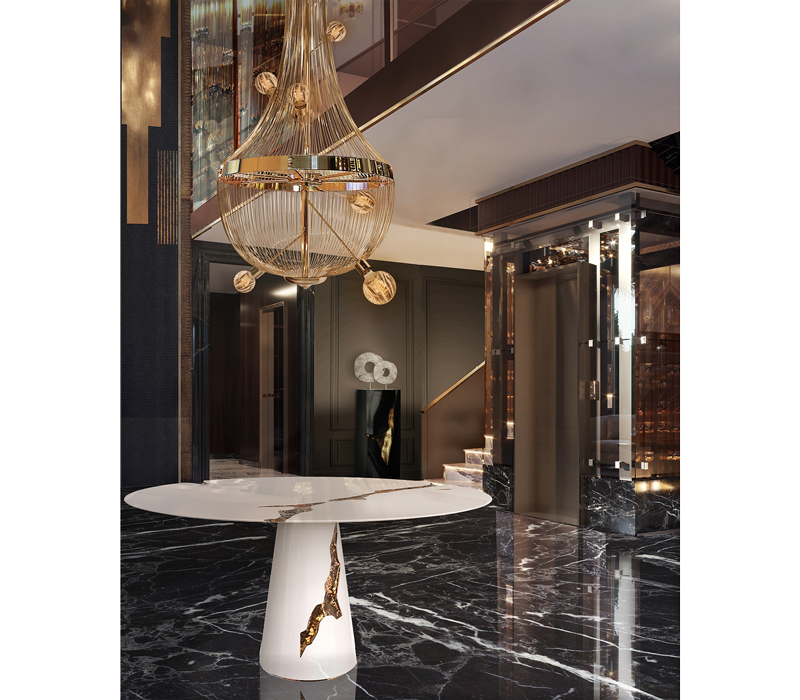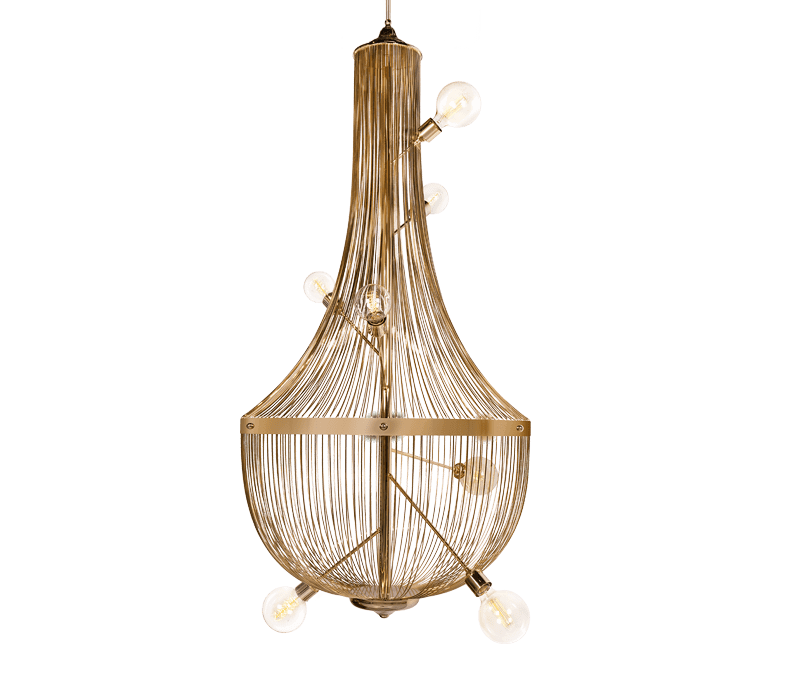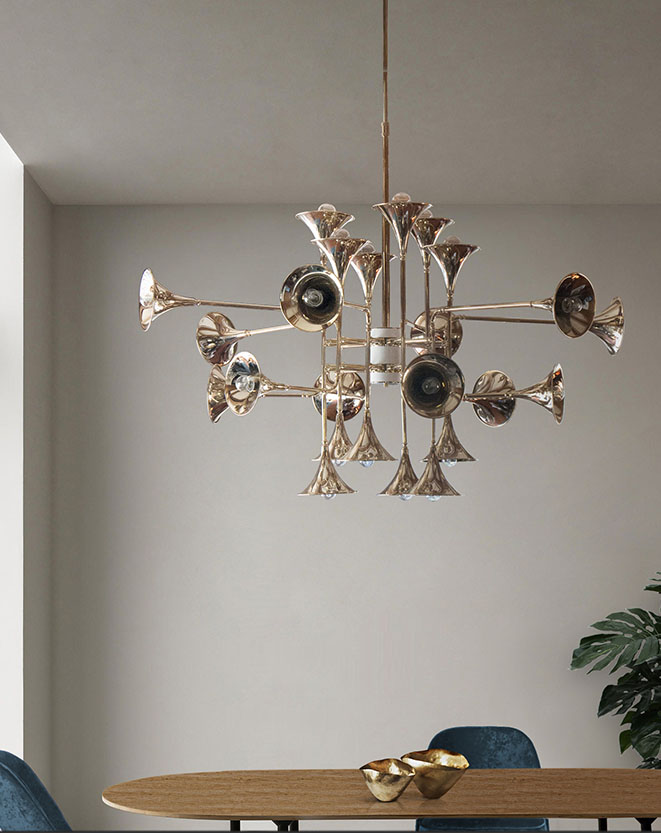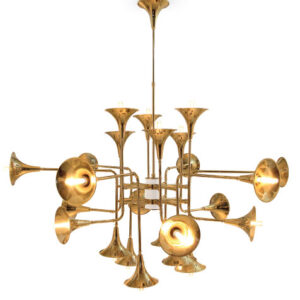Inspiration
THE SHINING BRILLIANCE OF CHANDELIER LIGHT
Unveil Luxury, Unleash Comfort – Eclectic Niche.
In a home, lighting is more than just a source of light; it sets the right atmosphere, and dispels and casts shadows based on the mood. At the heart of this lies the chandelier light, a dazzling centerpiece that elevates your space from practical to poetic. In the realm of interior design, few elements can elevate the ambiance of a space quite like a chandelier light. The mere mention of the word “chandelier” conjures images of opulence, elegance, and a luminous focal point that captivates the eye.
In its most fundamental form, a chandelier light is a multi-branched lighting fixture designed to suspend numerous light sources from a ceiling. Typically crafted from a combination of metalwork, crystal, or glass, they are distinguished by their elaborate ornamentation and ability to diffuse light through prismatic elements. Though primarily ornamental, their illumination function plays a crucial role in defining the ambiance and functionality of a space. ‘

The Chandelier Light's Historical Trajectory
The term “chandelier” originates from the French word “chandelle,” which translates to “candle”. Originating in medieval Europe, the first recognizable chandelier light started as a candleholder typically made from wrought iron and adorned with simple candles. These rudimentary fixtures provided practical illumination in grand halls and cathedrals, casting flickering shadows that danced on stone walls.
The Renaissance marked a turning point, with chandeliers blossoming into expressions of artistic grandeur. Italian artisans incorporated glass and crystal prisms, capturing and refracting light to create dazzling displays. These fixtures graced the palaces of royalty and nobility, symbolizing wealth, power, and sophistication.
The evolution continued through the Baroque and Rococo periods, with chandeliers becoming increasingly elaborate. Intricate metalwork, cascading crystals, and gilded accents formed dazzling masterpieces that rivaled other decorative elements. These magnificent creations reflected the opulent tastes of the era, serving as focal points in lavish ballrooms and opulent dining halls.
The following centuries saw the rise of new styles, from the classical elegance of Neoclassicism to the whimsical charm of Art Deco. Each era left its mark on the chandelier, adding unique elements and reinterpreting traditional forms.
Today, chandeliers continue to evolve, embracing contemporary materials and innovative designs. Sleek geometric forms coexist with traditional cascades of crystals, while LED technology offers energy-efficient alternatives to flickering candlelight. The modern chandelier remains a symbol of luxury and elegance, but it has also become accessible to a wider audience, adorning not just palatial mansions but also cozy apartments and contemporary homes.
Is Chandelier Same as Chandelier Light?
Yes, the terms “chandelier” and “chandelier light” are often used interchangeably. Both refer to the same type of lighting fixture characterized by multiple arms or branches. Sometimes “chandelier light” may also refer specifically to the illumination aspect of a chandelier—the light emitted by the fixture. Emphasizing the functional aspect of the chandelier. Another commonly used term is “pendant lights,” especially when referring to single-tiered fixtures with a central suspension point. Another term is “ceiling light” or “ceiling fixture,” encompassing a broader category of lighting suspended from the ceiling. In more specific contexts, chandeliers may be referred to as “crystal chandeliers” when they prominently feature crystal elements for added elegance. Additionally, depending on their design, they might be called “candle chandeliers” if they evoke the historical use of candles. The terminology often varies based on the region, style, and the specific features of the chandelier in question.
Country Most Famous for Chandelier Light
While chandelier lights have a global presence and are crafted in various countries, Italy is renowned for its exceptional craftsmanship and artistry in chandelier production. Italian chandeliers are celebrated for their intricate designs, luxurious materials, and attention to detail. Murano, an island near Venice, has been a particularly influential center for chandelier production, known for its exquisite glasswork. Italian chandeliers often embody a perfect blend of tradition and innovation, showcasing the country’s rich artistic heritage. However, other regions, including France, the Czech Republic, and Spain, also have strong traditions in chandelier craftsmanship, contributing to the international prestige of these luminous works of art.
The Anatomy of a Chandelier Light
A chandelier light is a complex yet harmoniously designed lighting fixture that consists of several key components, each contributing to its overall structure and functionality.
1. Central Body: At the heart of the chandelier is the central body or core, often crafted from metal, wood, or other materials. This central hub serves as the anchor point for the arms or branches extending outward. The design of the central body can vary widely, ranging from simple and streamlined to ornate and intricate, depending on the style of the chandelier.
2. Arms or Branches: Radiating from the central body are the arms or branches of the chandelier, each hosting a light source. Traditionally, these arms mimicked the look of candle holders, but modern designs can feature various shapes and materials. The number of arms can vary, influencing the overall aesthetic and the chandelier’s capacity for illumination.
3. Lights: The lights themselves are a crucial element, defining the chandelier’s primary function. In historical chandeliers, these were designed to hold candles. In contemporary models, electric bulbs, LEDs, or other lighting technologies are common. The arrangement of lights on the arms contributes to the overall symmetry and balance of the chandelier.
4. Bobeches: Bobeches are small, saucer-like cups or collars situated at the base of each light, designed to catch any dripping wax in traditional candle-style chandeliers. In modern chandeliers, they serve both a decorative and functional purpose, adding an extra layer of detail to the design.
5. Decorative Elements: Chandeliers often feature decorative elements such as crystals, glass beads, or other embellishments. These elements can be hung from the arms or incorporated into the design of the central body, enhancing the chandelier’s visual appeal and creating captivating light patterns when illuminated.
6. Frame or Framework: The frame of the chandelier provides the overall structure and shape. It supports the arms, lights, and decorative elements. Materials for the frame can include metal, wood, or other durable substances, and the design of the frame can significantly influence the chandelier’s style, whether it’s classic, contemporary, or somewhere in between.
7. Suspension System: Chandeliers are suspended from the ceiling, and the suspension system is a critical component. This can include a chain, rod, or other support structure that connects the chandelier to the ceiling canopy. The length of the suspension system determines how high or low the chandelier hangs, impacting its presence in a room.
Understanding the anatomy of a chandelier light allows for a deeper appreciation of the craftsmanship and design considerations that go into creating these captivating and functional works of art. Whether traditional or modern, each component plays a role in shaping the chandelier’s overall aesthetic and illuminating potential.
The Diversity of Chandelier Light's Styles
Chandeliers, known for their adaptability, come in various styles to suit different tastes and settings.Each style contributes a unique note to the overall composition of interior design. Chandeliers stand as versatile elements ready to illuminate spaces with both light and practical style. Let’s take a practical look at the diverse forms available:
Crystal Classics: Crystal chandeliers are timeless and elegant, featuring cascading crystal prisms. They vary in size and style, from grand, multi-tiered designs for larger spaces to smaller fixtures that add a touch of charm to intimate settings.
Art Deco Glamour: Inspired by the Art Deco era, these chandeliers boast clean lines, metallic accents, and geometric crystal formations. They bring drama and sophistication to modern interiors, offering a timeless touch of elegance.
Rustic Charm: Crafted from materials like wrought iron, wood, or natural elements, rustic chandeliers exude sophistication with an earthy charm. Ideal for spaces embracing natural elements, they bring rustic elegance to cabins, lodges, and similar environments.
Modern Minimalism: Modern chandeliers redefine elegance with clean lines, sleek geometric shapes, exposed bulbs, and metallic finishes. They seamlessly fit into contemporary spaces, providing understated yet impactful lighting solutions.
Avant-Garde Dazzle: Breaking conventional design boundaries, avant-garde chandeliers feature bold shapes, unconventional materials, and innovative lighting technology. These statement pieces serve not only as light sources but also as captivating focal points, sparking conversations and challenging traditional perceptions.
Chandelier Lights Across Different Rooms
Chandeliers, once reserved for grand ballrooms and dining halls, have evolved to become versatile lighting fixtures suitable for various rooms. Let’s explore how these elegant lights can enhance different spaces throughout the home:
1. Living Room: The living room is an ideal space for a chandelier, serving as a central focal point that adds a touch of sophistication and grandeur. Depending on the room’s size and style, a crystal chandelier can bring timeless elegance, while a modern or rustic design can complement contemporary or traditional decor.
2. Dining Room: Perhaps the most traditional placement, a chandelier in the dining room creates a captivating ambiance during meals. Suspended above the dining table, it not only provides ample light for dining but also acts as a stunning centerpiece, elevating the overall dining experience.
3. Bathroom: While less conventional, chandeliers in bathrooms are increasingly popular, especially in larger master bathrooms. A small, well-chosen chandelier can bring a touch of luxury and create a spa-like atmosphere, transforming the bathroom into a retreat for relaxation.
4. Bedroom: Chandeliers in bedrooms add a touch of glamour and romance. Suspended above the bed or in the center of the room, they provide functional lighting while infusing the space with a sense of opulence. Crystal or modern designs can complement various bedroom styles.

5. Entryway/Foyer: Make a bold statement by placing a chandelier in the entryway or foyer. This sets the tone for the entire home, welcoming guests with a dazzling display of light. Choose a design that complements the overall aesthetic and size of the entry space.
6. Kitchen: Modern kitchens are embracing chandeliers as statement pieces. Suspended above kitchen islands or dining areas, they not only provide task lighting but also contribute to the overall design scheme. Consider a design that complements the kitchen’s style, whether it’s sleek and modern or rustic and farmhouse-inspired.
7. Hallways: Chandeliers can also grace hallways, transforming these transitional spaces into elegant passageways. Whether a small and subtle design or a more elaborate fixture, a hallway chandelier adds a touch of style and ensures well-lit, inviting corridors.
8. Outdoor Spaces: Chandeliers are no longer confined to indoor spaces. Outdoor chandeliers designed for weather resistance can add a touch of glamour to covered patios, pergolas, or outdoor dining areas, creating a captivating atmosphere for al fresco gatherings.

Practical Considerations in Choosing a Chandelier Light
A few essential tips on aspects of size, placement, and maintenance that will empower you in choosing and maintaining a chandelier that elevates your space both aesthetically and functionally.
Size and Scale: Choosing the right size for your chandelier is paramount. A chandelier too large can overwhelm a space, while one too small can appear insignificant. To achieve harmony, consider the “rule of thumb”: the chandelier’s diameter should be roughly one-third to one-half the width of the room it adorns. Additionally, ensure sufficient clearance between the bottom of the fixture and any furniture or surfaces below. Ceiling height plays a crucial role: for high ceilings, opt for a chandelier with greater drop length to fill the vertical space; for lower ceilings, choose a more compact design. Remember, the goal is to create a balanced and visually pleasing composition.
Maintenance and Cleaning: Chandeliers demand regular care to maintain their brilliance. Develop a routine of dusting and cleaning, using appropriate materials for the specific components: soft cloths for crystal and glass, microfiber cloths for metal, and feather dusters for intricate areas. Address burnt-out bulbs promptly to maintain even illumination and prevent electrical hazards. Consider professional cleaning for vintage or particularly intricate chandeliers to ensure thorough and safe care. Remember, regular maintenance preserves your investment and ensures your chandelier remains a radiant centerpiece for years to come.
Placement and Hanging Height: Optimal placement unlocks a chandelier’s true potential. In dining rooms, center the fixture directly above the table, ensuring sufficient clearance for movement and conversation. In entryways, opt for a dramatic, eye-catching piece that welcomes guests with a touch of grandeur. For living rooms, consider placing the chandelier above a coffee table or seating area to create a focal point. Hang height is equally important: a chandelier placed too low can be obtrusive, while one too high can lose its impact. Aim for a height that allows for comfortable viewing and unobstructed light distribution.
Professional Installation: Hire a qualified electrician or lighting specialist for secure mounting and electrical connections, considering their expertise in both electrical work and interior design. Hire a qualified electrician or lighting specialist for secure mounting and electrical connections. Hiring a qualified electrician or lighting specialist ensures proper grounding, wiring connections, and secure mounting hardware. Their expertise protects both your investment and your loved ones. Consider their knowledge of interior design as well, as they can advise on placement for optimal functionality and aesthetic impact.
Energy-Efficient Bulbs: Chandeliers can consume a lot of electrical energy, but you can make a sustainable choice by opting for LED bulbs. They not only use up to 90% less energy compared to traditional incandescent bulbs, but also last up to 25 times longer, meaning fewer replacements and more sparkling moments. Consider adjustable color temperature LED bulbs to tailor the ambiance to your mood and occasion. .
Understanding Rules: Don’t just hang your chandelier lights and hope for the best. Research your specific chandelier and local regulations to ensure proper hanging height, weight limitations for your ceiling, and appropriate cleaning materials for different components. Remember, following the rules safeguards your chandelier and prevents potential hazards.
Shade Consideration: Decide whether your chandelier needs shades based on personal preference and style, shades are more than just dust protectors. They offer a chance to personalize your chandelier’s look and functionality. Fabric shades can add warmth and texture, while glass shades evoke a timeless elegance. Think about the room’s atmosphere you want to create and choose shades that complement your furniture and overall design theme. Upward-facing shades can direct light, while downward-facing shades create a more intimate ambiance. Consider that exposed bulbs can offer a modern and minimalist look.
Choosing Bulb Color: The right bulb color can transform your space. Warm-toned bulbs, like amber or soft white, create a cozy and inviting atmosphere, perfect for dining rooms or living areas. Daylight or cool white bulbs provide clear, focused light, ideal for kitchens, work areas, or anywhere you need optimal task lighting. Experiment with different color temperatures to set the mood and enhance the beauty of your chandelier’s design.
Advantages of Chandelier Lights
- Illumination and Ambiance: Chandeliers offer both practical lighting and atmospheric enhancement. Their multi-light sources provide ample illumination, while the sparkling facets or intricate designs create a warm, inviting ambiance.
- Focal Point and Design Enhancement: These statement pieces draw attention and become a central element in any room, elevating design schemes and adding a touch of luxury. Whether modern or traditional, chandeliers can complement various aesthetics.
- Space-Saving Elegance: Unlike lamps or floor fixtures, chandeliers utilize ceiling space, freeing up valuable floor area and maintaining an uncluttered feel. This is especially beneficial in smaller rooms.
- Historical and Cultural Significance: Chandeliers carry a rich history, from grand ballroom fixtures to contemporary reinterpretations. Owning one can connect you to this legacy and add a touch of cultural flair to your space.
- Durability and Value: Well-crafted chandeliers, particularly those made from sturdy materials like metal or crystal, can be long-lasting investments. Their timeless appeal and inherent quality often add value to a property.
If you have gotten this far and perhaps you’re wondering – is a chandelier light is right for you? The answer is simple: it depends. If your space craves a touch of magic, a burst of elegance, or simply a captivating centerpiece, then a chandelier might just be the missing ingredient. Imagine your next dinner party, bathed in the warm glow of a crystal masterpiece. Picture your living room transformed into a cozy sanctuary, illuminated by a cascading waterfall of light. These are the possibilities that await with a chandelier. So, if your heart whispers “yes” to the idea of a luminous focal point, leap and embrace the transformative power of chandelier light. Your space deserves it.










